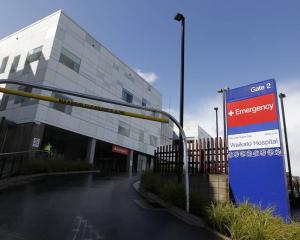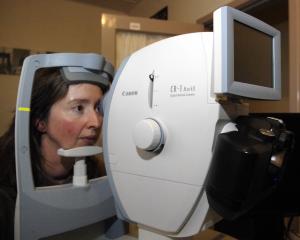Testing will be held at the ASB Bank, in Queenstown, today, between 11am and 2pm.
The final session will be held at Wakatipu New World tomorrow, between 9am and 4pm, all as part of Stroke Awareness Week.
The "Down With Blood Pressure" campaign is in its second year, with an anticipated 15,000 New Zealanders taking advantage of the nearly 150 free blood pressure testing sites nationwide.
Queenstown organisers are hoping at least 300 residents take part.
Participants are asked if they have had their blood pressure tested before and know how the process works.
If they have not, the process is explained to them.
The test is carried out and normal blood pressure should be 120 over 80.
The first figure measures the pressure of the blood in arteries when the heart is pumping, while the second figure measures the heart when relaxed.
St John Wakatipu acting ambulance team manager Alana Reid said high blood pressure was the most important risk factor for strokes.
Lower blood pressure equalled lower risk of stroke.
Regular testing was the only way to measure blood pressure because there were often no symptoms of high blood pressure.
"If a high figure pops up, we have a practice nurse from Wakatipu Medical Centre, so she can talk to people about their risk factors and recommend further treatments if necessary," Ms Reid said.
"The test takes two minutes and it's painless. We need to take more responsibility for our health and there are some things we can change and prevent."
Ms Reid said the campaign was also about informing the public of the easily recognisable signs and symptoms of stroke and the fact it was a medical emergency.
Seven New Zealanders die from stroke each day, taking the total to more than 2500 deaths a year.
An estimated 8000 New Zealanders will have a stroke each year and many will suffer disabilities as a result.
Stroke is the biggest cause of adult disability in New Zealand with an estimated 40,000 needing some form of ongoing care as a result.
Know the signs
Stroke is a medical emergency - call 111 immediately if you find yourself or see anyone else suffering from any of these symptoms. -
- Face: Is one side droopy?
- Arms: Raise both arms. Is one side weak?
- Speech: Speak a simple sentence. Is it slurred? Are you unable to?
- Time: Lost time equals lost brain function.











